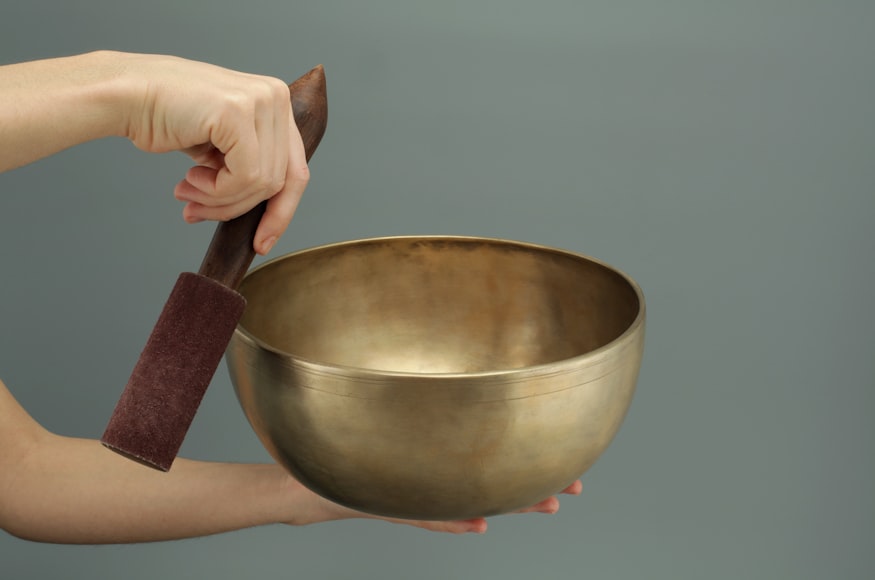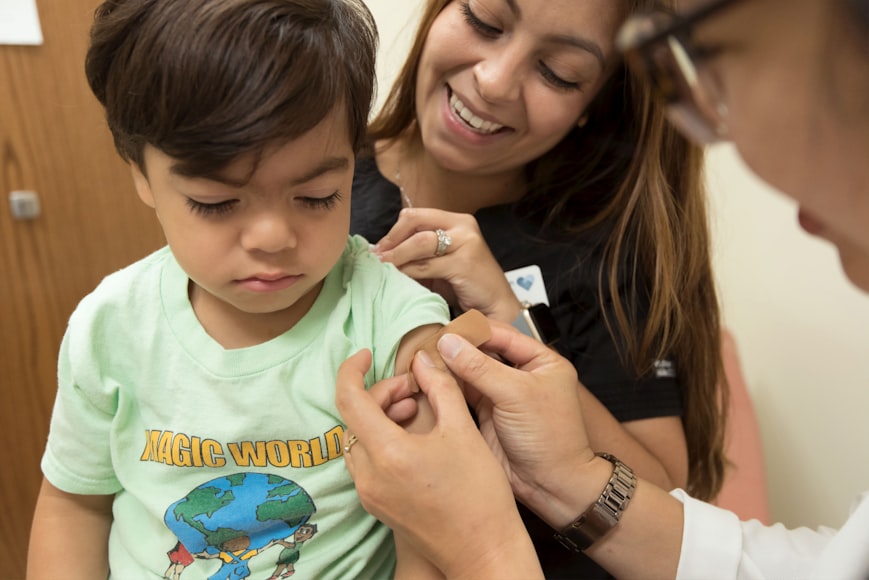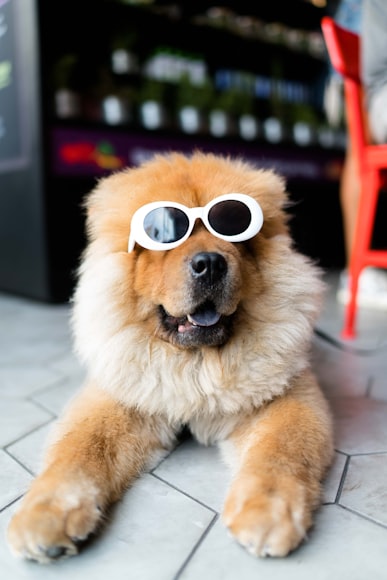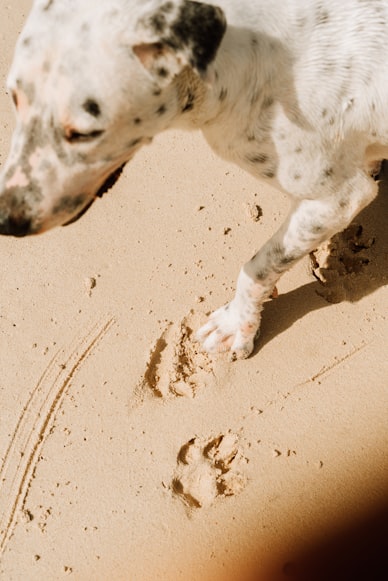Cure Dog’s Bad Breath Outline

Dogs, our beloved companions, can sometimes suffer from bad breath, which can be both unpleasant and embarrassing. Fortunately, there are effective ways to cure this condition and keep your dog’s breath minty fresh. Here’s a comprehensive guide to help you understand the causes of bad breath in dogs and provide practical solutions to eliminate it.
Causes of Bad Breath
- Dental Disease: The most common cause of bad breath in dogs is dental disease. Plaque and tartar buildup on the teeth can harbor bacteria that release unpleasant odors.
- Infections: Dental infections, such as gingivitis or periodontitis, can also lead to bad breath.
- Gastrointestinal Issues: Problems with the digestive system, such as indigestion, can cause gases and bacteria to accumulate in the mouth, resulting in bad breath.
- Foreign Objects: Objects lodged in the mouth or esophagus, such as sticks or toys, can trap food particles and create a breeding ground for bacteria.
- Kidney Disease: In some cases, bad breath can be a symptom of kidney disease.
Remedies for Bad Breath
1. Regular Dental Care
- Brushing: Brush your dog’s teeth regularly with a pet-specific toothpaste and toothbrush.
- Dental Chews: Offer dental chews that are designed to remove plaque and tartar buildup.
- Professional Cleaning: Schedule professional dental cleanings with your veterinarian once or twice a year.
2. Elimination of Infections
- Antibiotics: If an underlying dental infection is present, your veterinarian may prescribe antibiotics to eliminate the bacteria.
- Dental Surgery: In severe cases of dental disease, your veterinarian may recommend dental surgery to remove infected teeth or address other underlying issues.
3. Addressing Gastrointestinal Issues
- Diet: Switch to a high-quality diet that is easy on the stomach and helps maintain a healthy digestive system.
- Probiotics: Consider giving your dog probiotic supplements to support healthy gut bacteria.
- Treatment for Underlying Conditions: If a specific gastrointestinal condition is causing bad breath, follow your veterinarian’s instructions for diagnosis and treatment.
4. Removal of Foreign Objects
- Inspection: If you suspect a foreign object is lodged in your dog’s mouth, gently inspect it and remove it if possible.
- Veterinary Assistance: If you are unable to remove the object yourself, seek veterinary assistance immediately to avoid further complications.
5. Other Considerations
- OTC Breath Fresheners: While over-the-counter breath fresheners can provide temporary relief, they do not address the underlying causes of bad breath.
- Water Intake: Encourage your dog to drink plenty of water to help flush out bacteria and food particles from the mouth.
- Regular Veterinary Checkups: Schedule regular veterinary checkups to monitor your dog’s oral health and address any potential issues promptly.
Conclusion
Bad breath in dogs is a common problem that can be effectively cured. By understanding the causes and implementing the appropriate remedies, you can restore your dog’s breath to a pleasant state and maintain their overall health and well-being. Remember to seek veterinary assistance if you encounter any severe or persistent symptoms to ensure the best possible care for your furry friend.
Identify the Cause

Dogs, our beloved companions, often shower us with unconditional love and furry cuddles. However, sometimes their breath can knock us off our feet with its pungent odor. While bad breath is not uncommon in dogs, it can indicate underlying health issues that need attention. If your dog’s breath has become unbearable, it’s time to investigate the cause and find an effective cure.
Identifying the Cause
The first step in curing bad breath is to identify its cause. There are several common culprits that contribute to doggy halitosis:
- Dental disease: This is the most common cause of bad breath in dogs. It can manifest as tartar buildup, gingivitis, or periodontal disease.
- Periodontal disease: A severe form of dental disease, it occurs when bacteria spread below the gum line, infecting the supporting tissues and bones.
- Other infections: Dental abscesses, oral tumors, or sinus infections can also cause bad breath.
- Underlying medical conditions: Bad breath can sometimes be a symptom of underlying health issues, such as kidney disease, diabetes, or digestive disorders.
Diagnosing the Problem
To diagnose the cause of your dog’s bad breath, a thorough veterinary examination is essential. The veterinarian will perform a physical exam, checking your dog’s mouth for signs of dental disease or other infections. They may also recommend diagnostic tests, such as blood work or X-rays, to rule out any underlying medical conditions.
Treating the Cause
Once the cause of the bad breath has been identified, the veterinarian will recommend an appropriate treatment plan. If dental disease is the primary culprit, professional dental cleaning and scaling may be necessary. Antibiotics may be prescribed if an infection is present.
For underlying medical conditions, the treatment will focus on managing the primary disease. For example, in the case of diabetes, controlling blood sugar levels can help reduce bad breath.
Home Care
In addition to veterinary treatment, there are several home care measures you can implement to help improve your dog’s breath:
- Regular tooth brushing: Daily tooth brushing is crucial for maintaining good oral hygiene and preventing dental disease. Use a canine-specific toothbrush and toothpaste.
- Dental chews and treats: Some dental chews and treats are designed to help remove plaque and tartar buildup.
- Mouthwash or breath fresheners: Dog-friendly mouthwashes or breath fresheners can help temporarily reduce bad breath.
- Dietary changes: A diet rich in fiber and low in carbohydrates can help reduce plaque formation.
Prevention
Preventing bad breath in dogs starts with good oral hygiene and regular checkups. Here are some tips:
- Start dental hygiene early: Introduce tooth brushing and dental chews to your puppy as soon as they begin teething.
- Provide a healthy diet: Feed your dog a balanced diet that supports their health and oral hygiene.
- Schedule regular dental checkups: Take your dog for regular dental checkups and cleanings to identify and treat any dental issues early.
By following these steps, you can help your dog maintain fresh breath and a healthy mouth for years to come. Remember, good oral hygiene is not just about preventing bad breath but also ensuring your dog’s overall health and well-being.
Brush Regularly

Bad breath in dogs can be a common problem, but it doesn’t have to be a persistent one. With proper oral hygiene and care, you can effectively banish your dog’s halitosis and keep their breath smelling fresh. Here’s a thorough guide to help you understand the causes of bad breath in dogs and provide practical solutions for its cure:
Causes of Bad Breath in Dogs:
- Dental Problems: Tartar and plaque buildup on your dog’s teeth can harbor bacteria that produce odorous sulfur compounds.
- Gum Disease: Inflammation of the gums (gingivitis) and periodontal disease (periodontitis) can lead to bleeding, infection, and bad breath.
- Oral Tumors: In rare cases, bad breath may indicate the presence of oral tumors or cysts.
- Diabetes: High blood sugar levels can cause a sweet-smelling acetone breath.
- Kidney Disease: Bad breath with a urine-like odor may be a sign of kidney problems.
Home Remedies for Curing Bad Breath:
- Brush Regularly: This is the cornerstone of good oral hygiene for dogs. Brush your dog’s teeth at least twice a week with a dog-specific toothpaste. Use a soft-bristled brush and avoid sugary or abrasive toothpastes.
- Dental Wipes: If brushing isn’t an option, use dental wipes designed for dogs. They help remove plaque and freshen breath.
- Dental Chews: Crunchy dental chews can help scrape off plaque and tartar from your dog’s teeth.
- Coconut Oil: Rubbing coconut oil on your dog’s teeth can help kill bacteria and freshen breath.
- Baking Soda: Adding a small amount of baking soda to your dog’s water bowl can neutralize odors.
Professional Dental Cleaning:
If home remedies don’t resolve your dog’s bad breath, a professional dental cleaning may be necessary. Your veterinarian will remove tartar and plaque, treat any underlying oral diseases, and prescribe antibiotics if needed.
Other Preventive Measures:
- Feed a Healthy Diet: Good nutrition supports overall oral health. Feed your dog a balanced diet rich in vitamins and minerals.
- Avoid Sugary Treats: Sugary treats can contribute to plaque and tartar buildup.
- Provide Plenty of Water: Encourage your dog to drink plenty of water to flush away bacteria and food particles.
- Regular Vet Checkups: Schedule regular veterinary checkups to monitor your dog’s oral health and address any problems early on.
Additional Tips:
- Start brushing your dog’s teeth early to establish good habits.
- Be patient and gentle with your dog during dental hygiene routines.
- Make brushing fun by using flavored toothpaste or rewarding your dog with treats afterward.
- If your dog has severe bad breath, consult your veterinarian to rule out any underlying medical conditions.
By implementing these strategies, you can effectively cure your dog’s bad breath and maintain their oral health. Remember that consistency and patience are key. With regular care and attention, you can ensure that your furry friend enjoys a fresh, healthy breath for years to come.
Offer Dental Chews

Bad breath, or halitosis, is a common problem among dogs. It can be caused by a variety of factors, including poor oral hygiene, dental disease, and certain medical conditions. While bad breath can be embarrassing for pet owners, it can also be a sign of underlying health issues that require attention.
Causes of Bad Breath in Dogs
- Poor oral hygiene: Just like humans, dogs need to brush their teeth regularly to maintain good oral health. Plaque and tartar buildup on the teeth can lead to bad breath, as well as gum disease and tooth decay.
- Dental disease: Dental disease, such as gingivitis and periodontitis, can cause inflammation and infection in the gums and around the teeth. This can lead to bad breath, pain, and tooth loss.
- Medical conditions: Certain medical conditions, such as diabetes, kidney disease, and liver disease, can cause bad breath due to the buildup of toxins in the body.
How to Cure Bad Breath in Dogs
The most effective way to cure bad breath in dogs is to address the underlying cause. Here are some steps you can take:
1. Brush Your Dog’s Teeth Regularly
Brushing your dog’s teeth is the most important thing you can do to prevent and treat bad breath. Use a soft-bristled toothbrush and canine-specific toothpaste. Brush your dog’s teeth at least twice a week, or more often if possible.
2. Give Your Dog Dental Chews
Dental chews are a great way to help keep your dog’s teeth clean and fresh. Look for chews that have the Veterinary Oral Health Council (VOHC) seal of approval. VOHC-approved chews have been shown to reduce plaque and tartar buildup, and promote good oral hygiene.
3. Avoid Giving Your Dog Sugary Treats
Sugary treats can contribute to bad breath by feeding bacteria in the mouth. Avoid giving your dog sugary snacks, such as candy, cookies, and soda.
4. Feed Your Dog a Healthy Diet
A healthy diet can help support your dog’s overall health, including their oral health. Feed your dog a high-quality diet that is rich in nutrients. Avoid feeding your dog processed foods, which often contain ingredients that can contribute to bad breath.
5. Take Your Dog to the Vet
If you have tried all of the above steps and your dog’s bad breath persists, it is important to take them to the vet. Your vet can examine your dog’s mouth, diagnose the cause of their bad breath, and recommend the best course of treatment.
Other Tips for Preventing Bad Breath in Dogs
- Offer your dog fresh water daily.
- Regularly clean your dog’s food and water bowls.
- Avoid giving your dog toys that can harbor bacteria, such as stuffed toys.
- Take your dog for regular dental checkups.
By following these tips, you can help keep your dog’s breath fresh and their mouth healthy.
Clean Water

As a dedicated dog lover and pet blogger, I understand the importance of maintaining optimal oral health for our furry companions. Bad breath, a common issue among dogs, can stem from various factors, including dental disease, poor diet, and digestive problems. However, one of the most effective and overlooked remedies lies in the simple power of clean water.
The Importance of Hydration
Water plays a crucial role in flushing out bacteria and food particles that accumulate in the mouth. By providing your dog with access to clean, fresh water at all times, you can help reduce plaque formation, prevent gum disease, and combat the unpleasant odors associated with bad breath.
Water Additives: A Breath of Fresh Air
In addition to providing ample water, incorporating water additives specifically designed for dogs can further enhance oral hygiene. These additives often contain ingredients such as chlorhexidine, which helps reduce plaque and bacteria, and zinc, which inhibits the growth of odor-causing microorganisms.
Steps to Implement a Clean Water Regimen
- Provide Easy Access: Place water bowls in various locations throughout your home to encourage your dog to drink frequently.
- Use a Clean Bowl: Regularly wash and disinfect your dog’s water bowl to prevent bacteria build-up.
- Add Water Additives: Consult with your veterinarian to recommend water additives that are safe and effective for your dog.
- Monitor Water Intake: Track the amount of water your dog consumes and adjust the frequency of water changes accordingly.
Additional Tips for Fresh Breath
- Brush your dog’s teeth regularly: Brushing helps remove plaque and prevent tartar build-up, which contributes to bad breath.
- Provide dental chews: Dental chews are designed to massage gums, scrape away plaque, and freshen breath.
- Consider a dental checkup: If your dog’s bad breath persists despite home remedies, schedule a dental checkup with your veterinarian to rule out any underlying medical issues.
- Avoid feeding table scraps: Human food can often contain high amounts of sugar and fat, which can contribute to plaque formation and bad breath.
Conclusion
Combatting canine bad breath does not require complex or expensive treatments. By simply providing your dog with access to clean water and incorporating water additives, you can significantly improve their oral hygiene and bid farewell to unpleasant odors. Remember, a healthy mouth leads to a happy and healthy dog that can enjoy life to the fullest.
Avoid Certain Foods
Bad breath, medically known as halitosis, is a common issue affecting many dogs. While it can be embarrassing for owners, bad breath can also be a sign of underlying health problems. Understanding the causes of bad breath in dogs and implementing effective remedies is crucial for maintaining their oral health and overall well-being.
Causes of Bad Breath in Dogs
The primary cause of bad breath in dogs is the accumulation of bacteria in the mouth. These bacteria produce sulfur compounds that give off an unpleasant odor. Other factors that can contribute to bad breath include:
- Dental disease: Plaque and tartar buildup on the teeth can harbor bacteria and lead to bad breath.
- Gum disease: Inflammation and infection of the gums can cause bleeding and discharge, contributing to bad breath.
- Sinus infections: Infections in the nasal passages can drain into the mouth, resulting in bad breath.
- Digestive issues: Gastrointestinal problems, such as gastritis or intestinal parasites, can cause stomach upset and regurgitation, which can lead to bad breath.
- Certain foods: Foods such as onions, garlic, and dairy products can temporarily contribute to bad breath.
Avoid Certain Foods
Limiting your dog’s intake of foods that can contribute to bad breath is essential. These foods include:
- Onions: Onions are toxic to dogs and can cause hemolytic anemia, a condition in which red blood cells are destroyed.
- Garlic: Garlic is also toxic to dogs and can cause gastrointestinal upset and nausea.
- Dairy products: Milk, cheese, and other dairy products can be difficult for dogs to digest and can lead to diarrhea and bad breath.
Regular Dental Care
Regular dental care is crucial for preventing and treating bad breath in dogs. This includes:
- Brushing: Brush your dog’s teeth daily with a toothpaste specifically designed for dogs.
- Dental chews: Dental chews help remove plaque and tartar buildup and can freshen breath.
- Professional teeth cleaning: Regular professional teeth cleanings by a veterinarian are essential for removing plaque and tartar that cannot be removed through brushing alone.
Other Remedies
In addition to avoiding certain foods and practicing regular dental care, there are several other remedies that can help cure bad breath in dogs:
- Water additives: Add water additives designed to freshen breath to your dog’s water bowl.
- Chlorhexidine mouthwashes: Use chlorhexidine mouthwashes, as prescribed by your veterinarian, to kill bacteria in the mouth.
- Probiotics: Probiotics can help balance the bacteria in the digestive system and reduce bad breath caused by digestive issues.
- Coconut oil: Coconut oil has antibacterial properties that can help freshen breath and reduce plaque buildup.
When to See a Veterinarian
If your dog’s bad breath persists or worsens, it is important to consult with your veterinarian. Persistent bad breath can be a sign of an underlying health condition that requires treatment. Your veterinarian will conduct a thorough examination and recommend appropriate diagnostic tests to determine the cause and provide the best treatment plan.
Conclusion
By implementing these remedies and following recommended dental care practices, you can effectively cure your dog’s bad breath and maintain their oral health. A fresh breath not only enhances your dog’s well-being but also strengthens the bond between you and your furry companion. Remember to consult with your veterinarian if bad breath persists or is accompanied by other symptoms to ensure proper diagnosis and treatment.
Consider Semi-Moisturized Food
As a dog owner, you inevitably encounter the occasional smelly breath from your furry companion. While some level of bad breath is normal, persistent or excessive foul odor can indicate underlying health issues or poor dental hygiene. To ensure your dog’s oral health and well-being, it’s crucial to address the causes of bad breath and implement effective remedies.
Understanding the Causes of Bad Breath in Dogs
- Dental Disease: Periodontal disease, caused by plaque and tartar buildup on the teeth, is a common culprit behind bad breath.
- Gum Infections: Gingivitis, an inflammation of the gums, can lead to swelling, bleeding, and unpleasant odors.
- Oral Ulcers: Lesions or ulcers in the mouth can cause pain, bleeding, and foul-smelling breath.
- Digestive Problems: Gastrointestinal issues, such as acid reflux or indigestion, can cause food or stomach contents to enter the mouth, resulting in bad breath.
- Kidney Disease: Severe kidney disease can lead to an accumulation of toxins in the bloodstream, which can cause bad breath.
- Liver Disease: Similarly, liver disease can impair the body’s ability to filter toxins, resulting in an unpleasant odor in the mouth.
- Diabetes: Uncontrolled blood sugar levels in diabetic dogs can contribute to bad breath.
- Foreign Objects: Objects stuck in your dog’s mouth or throat, such as bones or toys, can decay and create foul odors.
Remedies for Dog Bad Breath
1. Regular Dental Check-ups
The best way to prevent and treat bad breath in dogs is through regular dental care. Schedule routine professional teeth cleanings with your veterinarian to remove plaque, tartar, and bacteria from your dog’s teeth.
2. Daily Teeth Brushing
Just like humans, dogs benefit from daily teeth brushing. Use a dog-specific toothbrush and toothpaste to gently remove plaque and bacteria from your dog’s teeth and gums.
3. Dental Chews and Toys
Dental chews and toys help keep your dog’s teeth clean and stimulate saliva production, which helps neutralize mouth odors. Choose chews that are approved by the Veterinary Oral Health Council (VOHC).
4. Semi-Moisturized Food
Semi-moisturized foods can help keep your dog’s mouth hydrated and reduce bad bacteria. They may also be easier for dogs with dental problems to chew.
5. Water Additives
Adding water additives specifically designed for dogs can help freshen breath and reduce bacteria. Look for products that contain chlorhexidine or cetylpyridinium chloride.
6. Oral Sprays
Oral sprays can be used to freshen breath and kill bacteria in the mouth. They are especially helpful for dogs who are resistant to tooth brushing.
7. Natural Remedies
Some natural remedies have been suggested to help reduce bad breath in dogs, including:
- Parsley: Parsley contains chlorophyll, which has antibacterial properties.
- Mint: Mint helps freshen breath and reduce inflammation.
- Yogurt: Yogurt contains probiotics, which can help balance the bacteria in your dog’s mouth.
8. Address Underlying Health Issues
If your dog’s bad breath persists despite good dental hygiene, it’s important to rule out any underlying health issues. Consult with your veterinarian to determine if there are any underlying medical conditions contributing to the bad breath.
Preventing Bad Breath in Dogs
- Start Dental Care Early: Begin brushing your dog’s teeth early to establish good habits.
- Offer Dental Treats: Provide your dog with dental chews and toys to clean their teeth and stimulate saliva production.
- Avoid Sugary Foods: Limit sugary treats that can contribute to plaque and bacteria buildup.
- Provide Plenty of Water: Ensure your dog has access to clean water at all times to keep their mouth hydrated.
- Regular Veterinary Check-ups: Schedule regular veterinary check-ups to monitor your dog’s oral health and detect any potential problems early.
Remember, while occasional bad breath is normal, persistent or excessive foul odor should be addressed to ensure your dog’s overall health and well-being. By implementing these remedies and maintaining good dental hygiene, you can help your furry friend enjoy a fresh, healthy breath for years to come.
Chlorhexidine Rinse
Bad breath in dogs, also known as halitosis, can be a common and unpleasant problem for pet owners. While it’s natural for dogs to have some degree of bad breath, persistent or severe halitosis can indicate underlying health issues that need attention.
One effective solution for curing bad breath in dogs is using a chlorhexidine rinse. Chlorhexidine is a powerful antiseptic that kills bacteria in the mouth, reducing the main cause of bad breath. Here’s a detailed guide on how to use chlorhexidine rinse to effectively cure your dog’s bad breath:
Consult with Your Veterinarian
Before using any oral treatments on your dog, it’s essential to consult with your veterinarian. They can assess your dog’s oral health, rule out any underlying health conditions, and recommend the appropriate concentration and dosage of chlorhexidine rinse for your pet.
Choose the Right Chlorhexidine Rinse
Not all chlorhexidine rinses are created equal. Some rinses contain alcohol, which can be irritating to your dog’s mouth. Choose a chlorhexidine rinse specifically designed for pets and free of alcohol.
Instructions for Use
- Prepare the Solution: Dilute the chlorhexidine rinse according to your veterinarian’s instructions. Typically, the recommended dilution is 1 part chlorhexidine to 2 parts water.
- Introduce the Rinse: Gradually introduce the chlorhexidine rinse to your dog. Start by dipping a cotton ball or gauze pad in the solution and gently wiping it across your dog’s teeth and gums.
- Rinse the Mouth: Once your dog is comfortable with the chlorhexidine wipe, you can start rinsing their mouth with the solution. Fill a syringe or turkey baster with the diluted chlorhexidine and gently squirt it into your dog’s mouth. Allow your dog to hold the solution in their mouth for a few seconds before spitting it out.
- Frequency of Use: Follow your veterinarian’s recommendations for the frequency of use. Typically, chlorhexidine rinses are used once or twice a day for several weeks or until your dog’s bad breath has resolved.
Additional Tips
- Avoid Brushing Immediately: Do not brush your dog’s teeth immediately before or after using a chlorhexidine rinse. This can reduce the effectiveness of the rinse.
- Avoid Food and Water: Keep your dog from eating or drinking for at least 30 minutes after using the chlorhexidine rinse.
- Monitor Your Dog: Observe your dog for any adverse reactions to the chlorhexidine rinse. If your dog experiences any discomfort, swelling, or irritation, discontinue use and consult with your veterinarian immediately.
Additional Causes of Bad Breath in Dogs
Beyond bacteria in the mouth, other factors can contribute to bad breath in dogs, including:
- Periodontal Disease: A severe gum infection can cause inflammation and bleeding, leading to bad breath.
- Dental Abscesses: Infections below the gum line can create pockets of pus, resulting in a foul odor.
- Dry Mouth: A lack of saliva can allow bacteria to flourish, causing bad breath.
- Diabetes: Uncontrolled diabetes can lead to a buildup of ketones in the breath, resulting in a fruity or acetone-like smell.
- Kidney Disease: Advanced kidney disease can cause a buildup of urea in the breath, giving off a urine-like odor.
Conclusion
Chlorhexidine rinse is an effective solution for curing bad breath in dogs caused by bacteria in the mouth. By following the instructions and consulting with your veterinarian, you can safely and effectively eliminate your dog’s halitosis and promote their overall oral health. Remember, if your dog’s bad breath persists or worsens, it’s important to seek veterinary attention to rule out any underlying health conditions.
Dental Surgery
Bad breath in dogs is a common problem, affecting up to 80% of pets. While it can be an unpleasant issue for pet owners, it can also indicate underlying health problems that require attention.
Causes of Bad Breath in Dogs
There are several factors that can contribute to bad breath in dogs, including:
- Dental disease: This is the most common cause of bad breath in dogs. Bacteria and food particles can accumulate on the teeth and gums, forming plaque and tartar. Over time, plaque and tartar can lead to gum disease and tooth decay, causing bad breath.
- Oral infections: Infections in the mouth, such as gingivitis and periodontitis, can also cause bad breath.
- Gastrointestinal issues: Problems with the digestive system, such as acid reflux or inflammatory bowel disease, can cause regurgitation or vomiting, which can lead to bad breath.
- Medical conditions: Certain medical conditions, such as diabetes or kidney disease, can also cause bad breath.
Home Remedies for Dog Bad Breath
There are several home remedies that can help freshen your dog’s breath, including:
- Regular brushing: Brushing your dog’s teeth at least twice a week can help remove plaque and bacteria and prevent tartar buildup.
- Dental chews: Dental chews can help clean your dog’s teeth and massage their gums, reducing plaque and bad breath.
- Water additives: There are special water additives available that can help neutralize bad breath and freshen your dog’s mouth.
- Coconut oil: Coconut oil has antibacterial and antifungal properties that can help reduce bad breath. You can give your dog a spoonful of coconut oil daily or add it to their food.
When to See a Veterinarian
If your dog’s bad breath persists or worsens despite home remedies, it’s important to consult with your veterinarian. Your veterinarian can examine your dog’s mouth, diagnose the underlying cause of their bad breath, and recommend appropriate treatment options.
Dental Surgery for Dogs with Bad Breath
In severe cases, your veterinarian may recommend dental surgery to remove infected or diseased teeth. Dental surgery can be an effective way to eliminate bad breath, improve your dog’s dental health, and prevent further complications.
Dental surgery for dogs typically involves the following steps:
- Pre-operative examination: Your veterinarian will perform a thorough examination to assess your dog’s overall health and suitability for dental surgery.
- Anesthesia: During dental surgery, your dog will be placed under general anesthesia to ensure their comfort and safety.
- Tooth extraction: Your veterinarian will carefully remove any infected or diseased teeth using specialized surgical instruments.
- Tooth cleaning: The remaining teeth will be cleaned and polished to remove plaque and tartar.
- Post-operative care: Your veterinarian will provide you with instructions on how to care for your dog after dental surgery. This may include providing them with soft food, pain medication, and antibiotics.
Other Treatment Options
In addition to dental surgery, there are other treatment options for dogs with bad breath, including:
- Antibiotics: Antibiotics can be used to treat oral infections that are causing bad breath.
- Anti-inflammatory medications: Anti-inflammatory medications can help reduce inflammation and pain in the mouth, which can improve bad breath.
- Dietary changes: Changing your dog’s diet to include more fiber and fewer refined carbohydrates can help improve their digestion and reduce bad breath.
Prevention of Dog Bad Breath
The best way to prevent bad breath in dogs is to practice good dental hygiene, including regular brushing and dental chews. You should also schedule regular veterinary checkups to ensure your dog’s teeth and gums are healthy.
By following these tips, you can help keep your dog’s breath fresh and prevent dental problems that can lead to bad breath.
Prevention
Bad breath, also known as halitosis, is a common problem among dogs. While it can be an uncomfortable and embarrassing issue for pet owners, it can also indicate underlying health concerns. Fortunately, there are several effective ways to prevent and cure bad breath in dogs.
Prevention
The best way to combat bad breath in dogs is through preventive measures:
-
Schedule regular veterinary dental exams and cleanings: Similar to humans, dogs require regular professional dental care to maintain optimal oral health. Your veterinarian will examine your dog’s teeth, gums, and mouth for any signs of infection, disease, or tartar buildup. They will also perform a thorough dental cleaning to remove plaque and bacteria that can lead to bad breath.
-
Maintain a good oral hygiene routine at home: Brushing your dog’s teeth daily is essential for preventing bad breath. Use a dog-specific toothpaste and toothbrush. Start by gently brushing the outside surfaces of the teeth, gradually working your way to the inner surfaces. Avoid using human toothpaste, as it contains ingredients that are harmful to dogs.
-
Provide plenty of dental chews: Dental chews, such as rawhide or bully sticks, help to scrape away plaque and tartar from your dog’s teeth. They also encourage chewing and saliva production, which both help to keep the mouth clean.
-
Offer a water additive: Adding a water additive to your dog’s bowl can help freshen their breath. Look for products that contain ingredients like chlorophyll or baking soda, which have deodorizing properties.
Remediation
If your dog already has bad breath, there are several remedies you can try:
-
Treat underlying health conditions: Bad breath can be a symptom of underlying health conditions, such as digestive issues, diabetes, or kidney disease. Your veterinarian will investigate the cause of your dog’s bad breath and recommend the appropriate treatment plan.
-
Give probiotic supplements: Probiotics are beneficial bacteria that can help balance the oral microbiome and reduce bad breath. You can give your dog probiotic supplements in the form of tablets, chews, or powder added to their food.
-
Use an antiseptic mouthwash: There are several antiseptic mouthwashes specifically designed for dogs. These mouthwashes contain ingredients that kill bacteria and freshen breath. Follow the instructions on the label carefully to ensure safe and effective use.
-
Consider a dental extraction: In some cases, a dental extraction may be necessary to remove a severely infected or damaged tooth. This is a more invasive procedure but can be a permanent solution for bad breath caused by dental disease.
Additional Tips
-
Avoid feeding your dog table scraps: Human foods, especially sugary or processed items, can contribute to bad breath. Stick to a high-quality, species-appropriate diet.
-
Keep your dog’s water bowl clean: Change your dog’s water bowl daily to prevent the growth of bacteria that can cause bad breath.
-
Be patient and consistent: It may take time to see results from treating bad breath. Be patient and consistent with your efforts, and consult with your veterinarian if you have any concerns.
Remember, bad breath is a common problem that can have both health and social implications for your dog. By implementing these preventive and remedial measures, you can help keep your dog’s breath fresh and their mouth healthy.
























